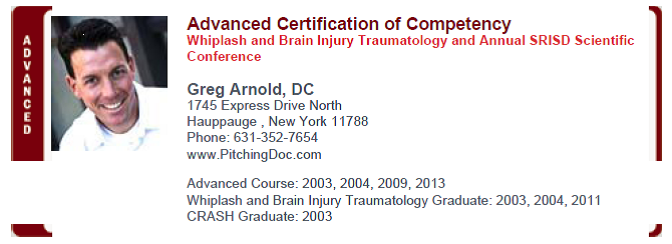The Whiplash Report
Vol. 1 No. 5 - April 9, 2014
(Click here for a 1-page .pdf of this newsletter)
Providing personal injury attorneys
with the most up-to-date research on chiropractic and whiplash, from
the biomechanics of whiplash injury to chiropractics ability to enhance
patient care and recovery.
In this issue, a 2012 study addresses Reverse Causality:

and the common belief that whiplash victims submitting claims for treatment have longer recovery times and worse outcomes than those who do not:

they showed that when Reverse Causality is figured into the data, those submitting claims actually had lower pain levels (18.8/100) than those not submitting claims (19.01/100). The researchers concluded:

You want the best for your personal injury clients.
Refer them to a chiropractor trained to properly care for them.

